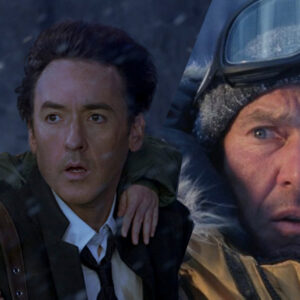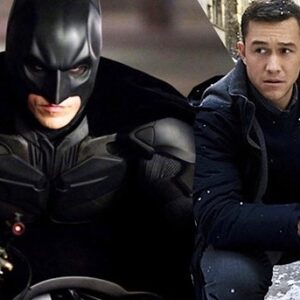Ink & Pixel is a source of pride and joy for me as a writer and as such, I’m always striving to take this column further for those who read and enjoy it. If you yourself, or anyone you know, helped to make any of the amazing feature animated films found within this column, I would love to talk to you to further my knowledge. Please contact me at [email protected] so we can discuss it further.

* Thwip Thwip * Hey, your friendly neighborhood Joblo columnist Steve Seigh here. Today, I want to talk to you about heroes. No, not the show that aired on NBC for one incredible season and then promptly fell apart. I’m talking about men, women, and fictional characters that amaze and inspire people from all different walks of life. Spider-Man is one of these heroes. His super heroic actions, relatability, and indomitable spirit have become a legend of the comic book page for several generations. It’s no wonder that people can’t get enough of him when he’s up on the silver screen. In 2012, Sony and Marvel looked to director Mark Webb to reboot the character and thus, THE AMAZING SPIDER-MAN webbed its way into theaters.

Created by Stan Lee and Steve Ditko, the character of Spider-Man made his debut inside the pages of Amazing Fantasy #15 in the year 1962. Underneath the mask, Spider-Man is Peter Parker; an orphaned boy, who – in his awkward teenage years – encountered a radioactive spider whose bite endowed him with an assemblage of superhuman abilities. Once bitten (and after waking up from a wicked spider bite hangover) Peter developed the powers of superhuman strength, speed, agility, stamina, reflexes, and endurance, as well as the ability to cling to and climb most surfaces. Additionally, Peter also has a regenerative healing factor and a precognitive “spider sense” that has granted him the advantage of being able to predict the actions of his enemies; a skill that has proven useful to Peter, particularly when engaging in hand-to-hand combat with his many foes.

THE AMAZING SPIDER-MAN retells the origin story of how Peter Parker (Andrew Garfield) became the quiptastic wall crawler, while also introducing beloved characters, romantic partners, and rogues into the rebooted franchise. Joining the cast this time out is the positively darling Emma Stone, portraying Peter’s first love, Gwen Stacy; with Sally Field and Martin Sheen stepping into the roles of Peter’s caretaker family, Aunt May and Uncle Ben, respectively. the film has Peter learning that As Spider-Man, Peter learns that a science professor by the name of Dr. Curt Conners (Rhys Ifans) has created a dangerous serum; one that corrupts the good doctor’s mind and body, ultimately turning him into a deadly abomination that is both man and lizard. With the help of Gwen’s father, Captain Stacy (Dennis Leary), Spider-Man swings into action with the hope of undoing The Lizard’s steadily closing death grip on The City That Never Sleeps.

Now, taking into account today’s inflated ticket prices and 3D IMAX presentations, you can bet that folks are going to want to be particularly wowed by the special effects that a superhero film has to offer. Lucky for us THE AMAZING SPIDER-MAN was no slouch in its delivery of high octane action sequences, of which required an extensive amount of both digital and makeup effects to achieve. Let’s get right into it and talk about how The Lizard was developed as the first villain of the new Spider-Man filmverse.

As you might have noticed, Dr. Curt Conners is not only a brilliant man, but he’s also an amputee. Comic book history has informed us that before he was a valued scientist working at Oscorp, Dr. Conners was a combat surgeon enlisted in the United States Army. While working on an injured soldier, a nearby bomb blast claimed the good doctor’s right arm, resulting in his amputation. If you ask me, film history has seen its fair share of ill conceived amputations, visually speaking. Yes, the technology to make amputations look real wasn’t with us yet, but damn if those rubberized limbs and overcompensating blood tubes weren’t a bit much. Thanks to advances in our movie making technology, the effects team were able to outfit actor Rhys Ifans with a special glove that would cover the length of his entire arm, the glove would then act as its own green screen, able to be digitally manipulated during post-production.

In regard to creating the look of The Lizard, producers Avi Arad and Matt Tolmach scanned through several artists sketches of possible designs for the iconic character before finally settling on the creature’s appearance. Unfortunately, after the proverbial cat was out of the bag (courtesy of leaked photos of the planned toy line attached to the film), many fans and moviegoers were outraged by The Lizard’s final design. With dismay and vitriol, they rushed to their favorite message boards, claiming that The Lizard now looked like an oversized goomba from SUPER MARIO BROS. THE MOVIE, locked in a battle against bullous ichthyosis – a rare disease that causes human skin to thicken and appear scaly, giving it a lizard-like appearance. To be honest, I think that’s not much of a stretch. However, the design really grew on me once I had seen it in action up on the big screen.

Even if you don’t like the overall design for the character, you’ve at least got to give it up for the effects team who proclaimed that Curt should not only look like a lizard, but move like one as well. For research, Avi Arad visited a pet shop that his kids would often frequent and purchased the biggest bearded dragon they had. The lizard was kept in Mark Webb’s office and served as a source of inspiration for the cold blooded villain featured in the film. Avi even went so far as to give the lizard a nickname: Lord Boris. Adorable. Boris served not only as a pet, but was also used as reference material when designing The Lizard’s scales, claws, serpentine tongue, and jawline.

While researching the many production elements of this film (for the purpose of this article), I was surprised to learn that a variety of locations were used when creating THE AMAZING SPIDER-MAN’s New York City. Honestly, I had just assumed that all of the filming had taken place inside of The Big Apple. However, as expressed in the film’s Blu-Ray Special Features, places such as the Henry Ford Theater in Hollywood, St. John Bosco High School in Bellflower, CA, and several parts of the San Pedro, South Pasadena, and Woodland Hills, California area were all used to create the the film’s environments.

That said, there was still plenty of web-slinging action to be had inside of New York State City, as several of its Burroughs were featured in the film. Areas such as Manhattan’s Upper West Side, Fuller Place in Brooklyn, and even parts of Harlem all served as locations for both principle photography as well as areas in which to shoot a portion of Spidey’s web-swinging related stunts. As a native New Yorker, I’ve traversed the legendary Williamsburg Bridge (designed by Leffert L. Buck and in use by motorists since? the year 1903) countless times. So to see it appear in the film and in such vivid detail was a bit of a trip. Unfortunately, it was unrealistic to isolate the bridge for filming. Amazingly, however, a section of the bridge (measuring at an incredible 150 ft.) was instead erected in Los Angeles, California and was used to film this distinct sequence.

By the end of its theatrical run, THE AMAZING SPIDER-MAN webbed up a pretty penny with a total of $752,216,557 in worldwide receipts. I bet Peter could afford a lifetime of web fluid for his shooters with that kind of scratch laying around. For what it’s worth, I really enjoyed this film. The first two Sam Raimi films will always have their place within Spider-Man’s cinematic universe, but the on-screen chemistry between Gwen and Peter coupled with the emotional struggle of The Lizard will forever remain a highlight of the web head’s adventures on the silver screen. Excelsior!




















Follow the JOBLO MOVIE NETWORK
Follow us on YOUTUBE
Follow ARROW IN THE HEAD
Follow AITH on YOUTUBE